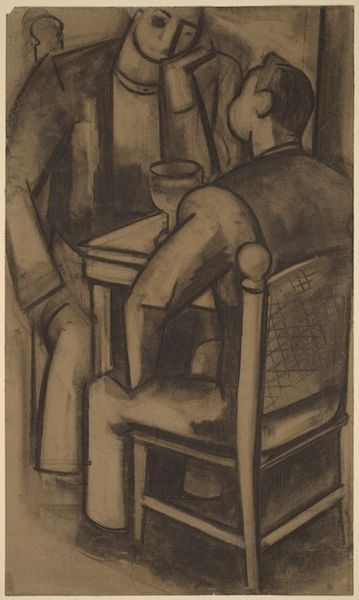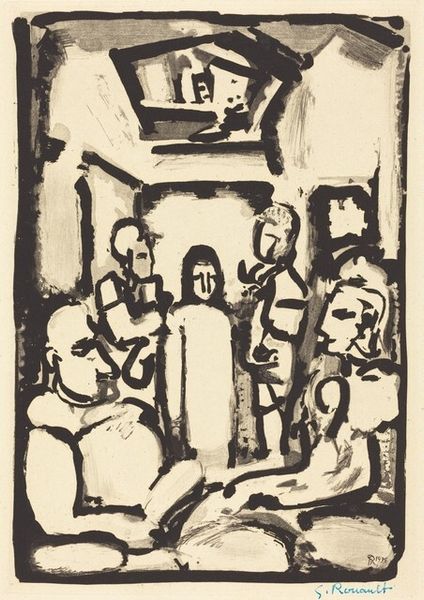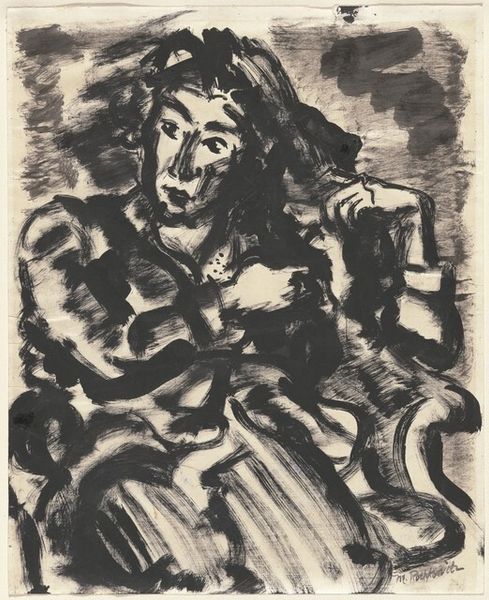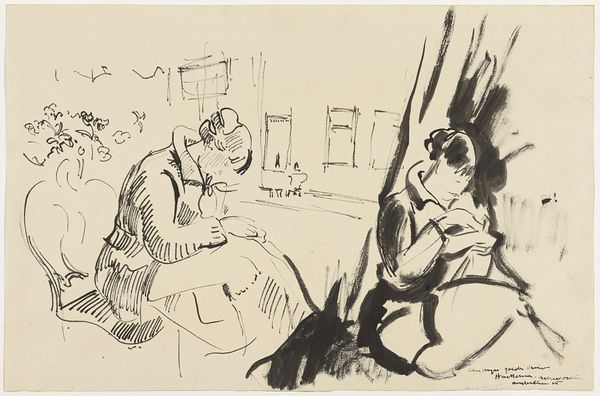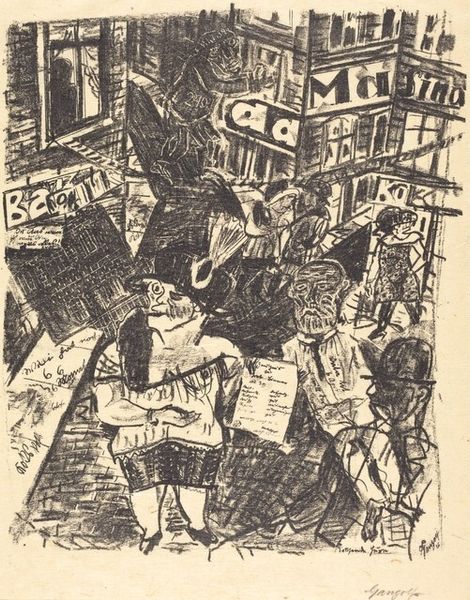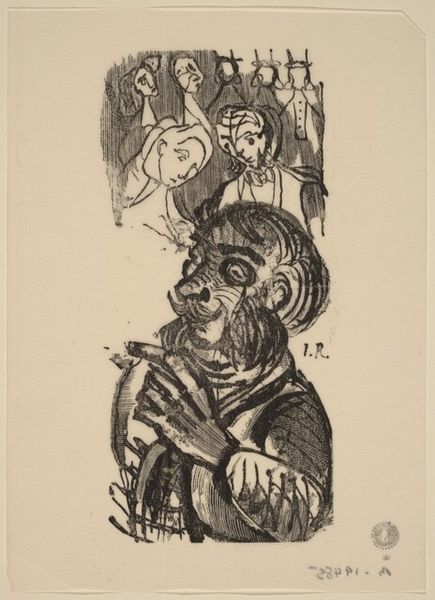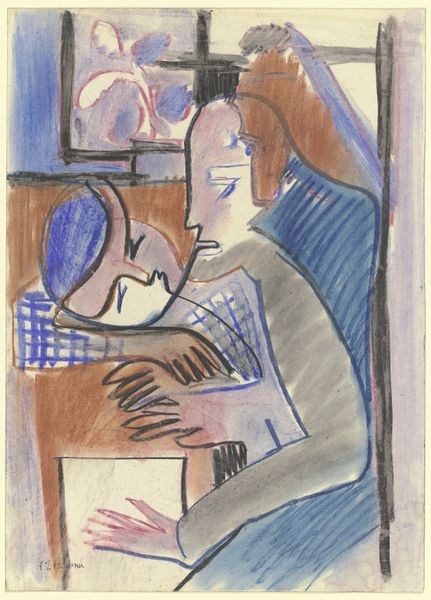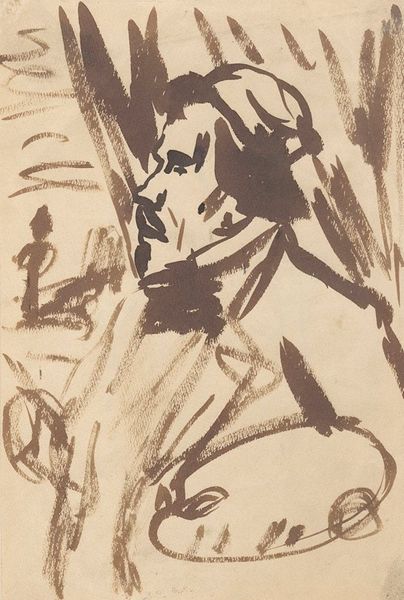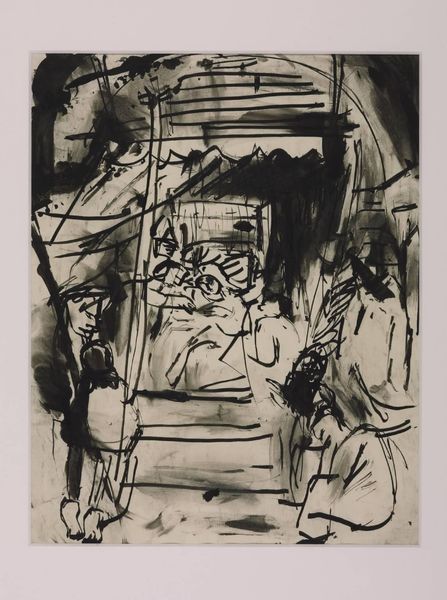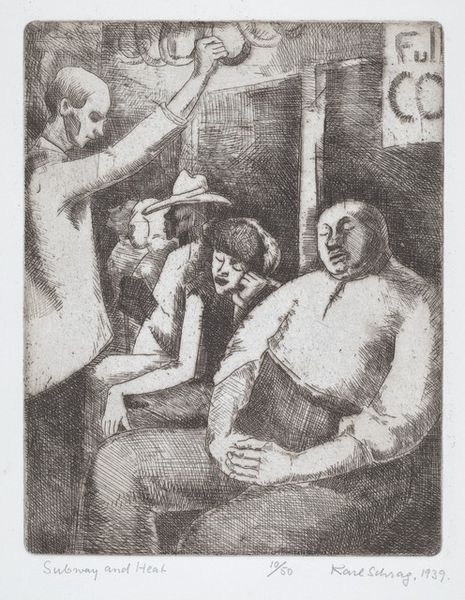
Copyright: National Gallery of Art: CC0 1.0
Editor: Here we have Hans Kornig’s "The Etcher" from 1953, rendered as a print. There’s a kind of starkness to it, but also a quirky charm. What do you make of this piece? Curator: This print reflects a very specific socio-political moment in postwar Germany, where artists grappled with their identities and roles. Note the crowded composition: portraits upon portraits, as if the artist is trapped within the history of representation itself. Editor: It does feel quite claustrophobic! Why do you think he chose to represent himself like that? Curator: Think about the etcher’s role – he's not just creating images; he's also reinterpreting, replicating, and perhaps even challenging established narratives. The caricature style raises a crucial question: is he satirizing the art world, or perhaps himself within it? Editor: I see what you mean. He looks kind of skeptical, leaning over his etching table. Was there a strong movement of self-reflection in the arts at that time? Curator: Absolutely. Many artists in that period felt a profound need to analyze their positions, to reconcile with a deeply fractured past and reimagine art’s place in society. Consider how institutions and power structures had used and abused imagery in the recent past. This portrait, therefore, becomes an act of critical engagement with both art history and his contemporary environment. Editor: That's a lot to unpack. I hadn't considered the historical context that much, but it definitely adds another layer to how I perceive the artist and the work itself. Curator: Indeed, understanding the socio-political influences gives us a deeper appreciation of Kornig's "The Etcher," moving beyond just personal expression. The print reveals the artist not just as a creator but as an active participant and critic within a specific historical and artistic landscape.
Comments
No comments
Be the first to comment and join the conversation on the ultimate creative platform.
